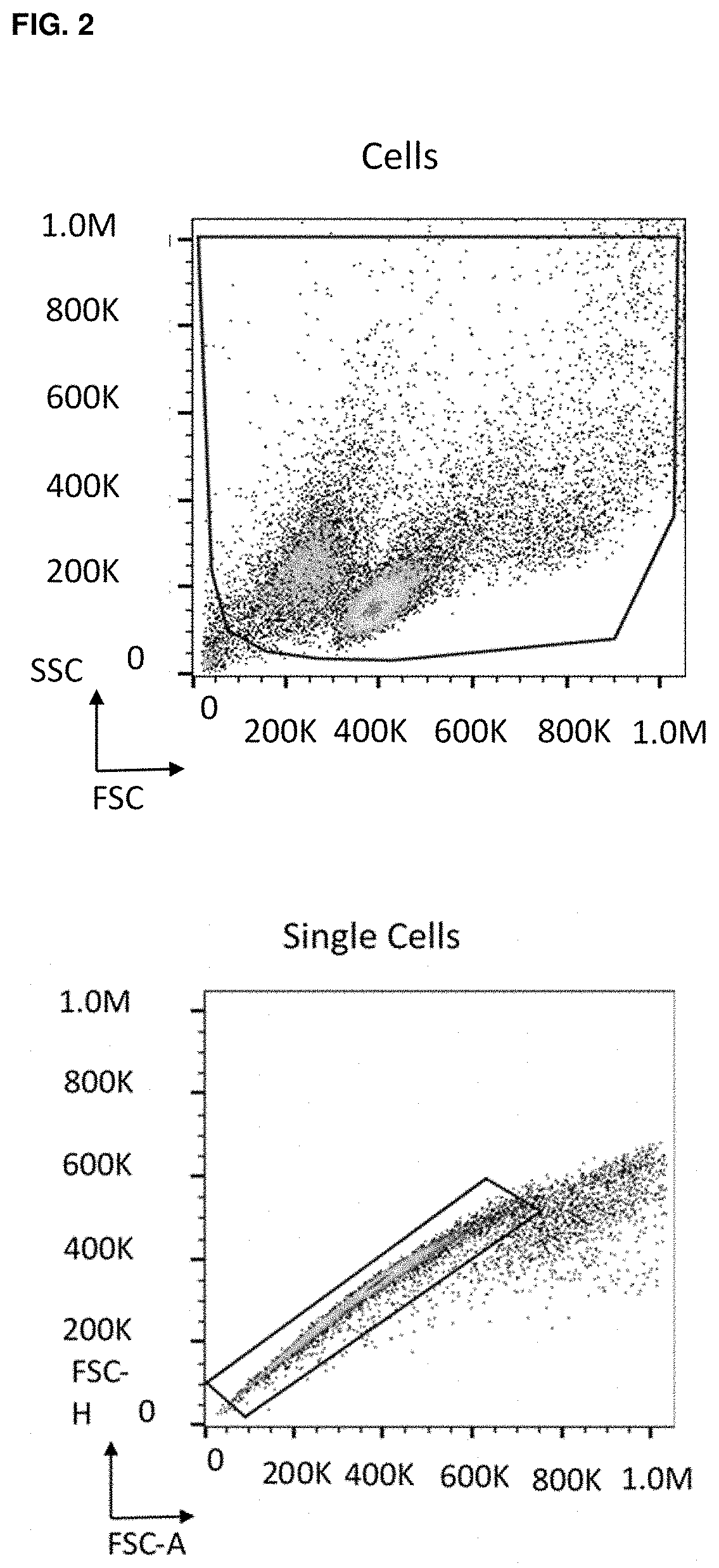Multispecific proteins
a technology of multi-specific proteins and proteins, applied in the field of multi-specific proteins, can solve the problems of low efficacy and likely hampered clinical development of agonistic anti-cd40 antibodies
- Summary
- Abstract
- Description
- Claims
- Application Information
AI Technical Summary
Benefits of technology
Problems solved by technology
Method used
Image
Examples
example 1
Multispecific Binding Proteins
[0371]Multispecific binding proteins in various formats were generated and their FAP-specificity, efficacy and potency of CD40 activation were determined. These multispecific proteins all comprised a FAP-specific binding domain and a CD40-specific binding domain. The impact of (i) adding human serum albumin (HSA)-binding domain(s), (ii) increasing valency by adding further CD40-binding domain(s), and (iii) changing the order of the binding domains within the protein were evaluated.
[0372]To compare the different formats, an in vitro assay was set up measuring the upregulation of the co-stimulatory receptor, CD86, expressed on human B cells upon CD40 triggering. This cellular assay used primary human B cells in the presence or absence of FAP-expressing cells. The upregulation of CD86 co-stimulatory molecule was evaluated as a marker of B cell activation. An anti-CD40 monoclonal antibody, whose mechanism of action is independent on FAP-mediated cross-linki...
example 2
al Properties, Binding Affinities, and Binding Specificities of a Multi-Specific Binding Protein
[0387]This Example describes experiments which were conducted to determine (1) biophysical properties, such as aggregate formation, and (2) binding affinity to the various target proteins (i.e. FAP, CD40 and serum albumin) and species cross-reactivity, of a multi-specific binding protein of the disclosure.
Aggregate Formation
[0388]Protein #5 (also sometimes called SMA136 herein) was analyzed by size exclusion chromatography (SEC) and multiangle light scattering (MALS). FIG. 6 shows the results of this analysis. This SEC profile demonstrates that Protein #5 is monomeric and monodisperse in solution and does not form aggregates.
Binding Affinity to Target Proteins
[0389]Summary The binding of DARPin® Protein #5 (“Protein #5”) to CD40, FAP and serum albumin from human, cynomolgus monkey and mouse was analyzed by surface plasmon resonance (SPR). The results showed that Protein #5 binds specifica...
example 3
ous Binding of Protein #5 to CD40, FAP and Serum Albumin Analyzed by Surface Plasmon Resonance
[0395]The following experiment describes a surface plasmon resonance experiment that was performed to analyze the simultaneous binding of a multi-specific protein comprising SEQ ID NO:5 to human CD40, human FAP and human serum albumin, respectively.
[0396]Materials and Methods. SPR measurements were performed using a ProteOn XPR36 instrument (BioRad). The running buffer was PBS pH 7.4 containing 0.005% Tween 20® (PBST). Biotinylated human CD40 (bio-hCD40-Fc) was immobilized on a NeutrAvidin coated NLC sensor chip to a level of 550 RUs. In a first analyst step (analyte 1) 25 nM of Protein #5 was immobilized on bio-hCD40 with an association of 120 s and dissociation of 0 s. This first step was directly followed by a second analyte step (analyte 2) during which either PBST, 25 nM Protein #5 or 50 nM hFAP were injected with an association of 120 s and dissociation of 0 s. In a third step (analyt...
PUM
| Property | Measurement | Unit |
|---|---|---|
| equilibrium dissociation constant | aaaaa | aaaaa |
| equilibrium dissociation constant | aaaaa | aaaaa |
| equilibrium dissociation constant | aaaaa | aaaaa |
Abstract
Description
Claims
Application Information
 Login to View More
Login to View More - R&D
- Intellectual Property
- Life Sciences
- Materials
- Tech Scout
- Unparalleled Data Quality
- Higher Quality Content
- 60% Fewer Hallucinations
Browse by: Latest US Patents, China's latest patents, Technical Efficacy Thesaurus, Application Domain, Technology Topic, Popular Technical Reports.
© 2025 PatSnap. All rights reserved.Legal|Privacy policy|Modern Slavery Act Transparency Statement|Sitemap|About US| Contact US: help@patsnap.com



